Part of the BRDM-2 numerous variants tree, the 9P148 Konkurs is a relatively modern tank-hunter vehicle, which saw a limited production from 1974 to 1982. It was caracterized by a fixed launcher with five wire-guided 9M113 "Konkurs" (AT-5 Spandrel) missiles, later upgraded to the 9M111 "Fagot" (AT-4 Spigot), reloaded from inside with up to 14 missiles in store. NATO used for it the BRDM-3 type until it was corrected. The 9P148 was also exported to the Warsaw Pact as well as many other countries, including Armenia and more recently India while being still used today. It was also copied by China as the AFT-9. In the current war in Ukraine, Oryx states that four Russian one were lost in action, including one captured whereas Ukraine lost 18.
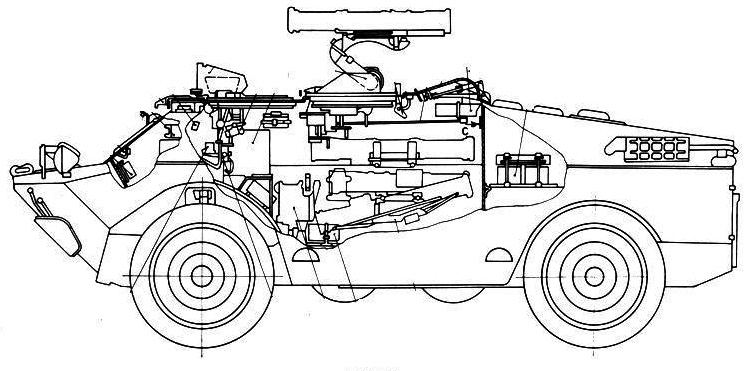
The great change is the adoption of an overhead five round launcher for the 9K113 Konkurs (AT-5 Spandrel) or 9K111 Fagot (AT-4 Spigot) anti-tank missile. Unlike the previous , the launcher cannot be retracted into the vehicle. The driver was seated on the left, commander on the right, with a console and specific sight to act as the gunner. This sight unit was is located above his head and is used to guide the missiles onto the target. The rest is identucal to the BRDM-2, with windows under armoured shutters and sets of sights plus two hatches, one for the driver and the commander, side-opening.
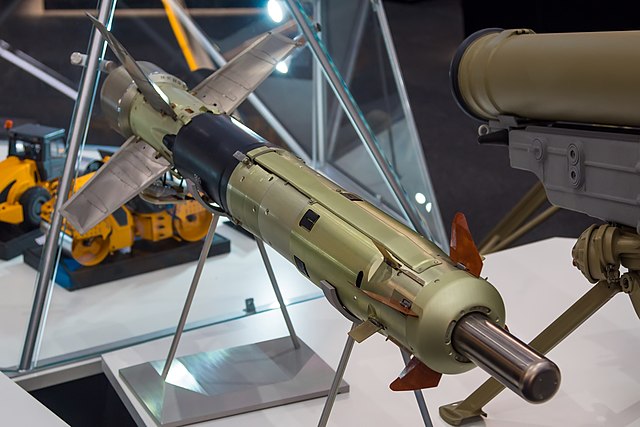
The 9M113 missile was designed to be fired from tracked and wheeled vehicles, later from 9M111 launchers as well, as an integral part of the BMP-2, BMD-2 and BRDM-2 range, each having a single turret ramp. The missile is stored and carried in a fiberglass container and launch tube, propulsed by a gas generator of the recoilless rifle type out of the tube, then igniting and run to target at 80 meters per second, accelerating to 200 meters per second thanks to its short range solid fuel motor. It is controlled all the way to target byt the operator at max four kilometers.
In flight to keep course it generally spins at 5-7 rps and is steered by dataling via its back incandescent infrared bulb to the target via input transmissions via a thin wire trailing behind. It can detect and trigger an alarm for any jamming, with the operator taking manual control in MCLOS mode instead of SACLOS which had a 90% accuracy as reported. NATO compares the Konkurs to the BGM-71 TOW and later 9K11 Malyutka.
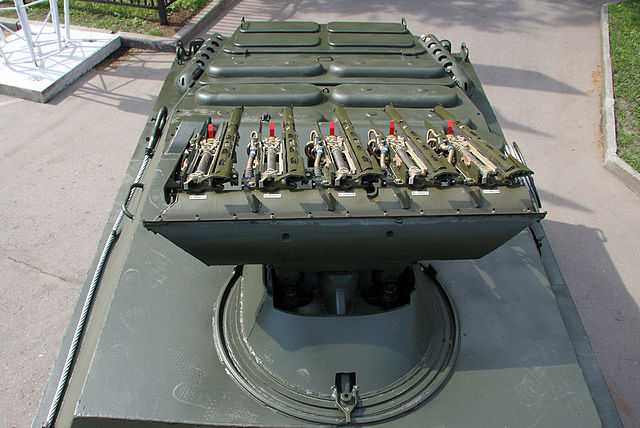
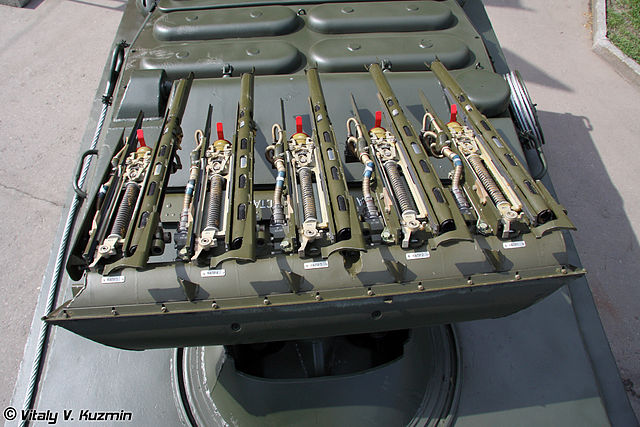
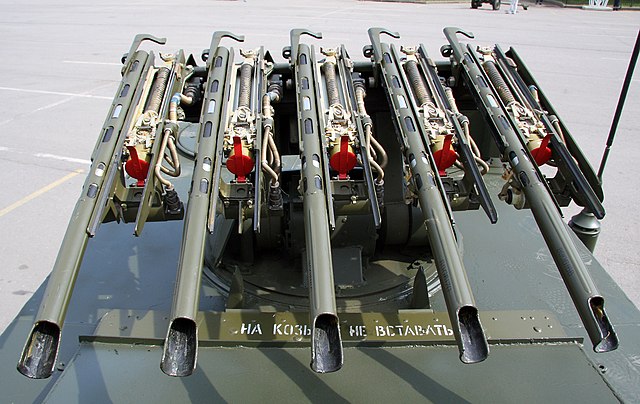
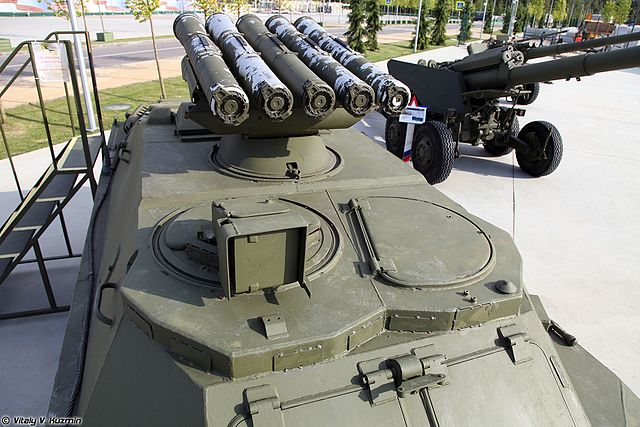
**Towsan-1, Tosan, Towsan, or M113: 9M113M Konkurs-M (AT-5B Spandrel B) copy.[10] Introduced in early 2000.[6][11] Unclear if still in production.[12][13] Used primarily by paratroopers and armored vehicles.
weaponsystems.net 9P148
weaponsystems.net 9K113+Konkurs
militaryfactory.com
en.wikipedia.org 9M113 Konkurs
Development
The 9P148 was a derivative of the BRDM-2 motovated by the use of a new generation ATGMs, this time the wire-guided 9M113 "Konkurs" (AT-5 Spandrel). The AT-5 launcher however could also fire the older 9M111 "Fagot" (AT-4 Spigot) later in production. The external reloading was made by a small hatch located behind the launcher, with the commander doubling as gunner controlling the missiles to target thanks to as front right mounted sight, unstabilized, so that the vehicle neeed to setop before firing. The ionternal fighting compartment was setup to carry as much as ten 9M111 and ten 9M113 or fourteen of the larger 9M113. From the improved 1PN66 day/night thermal sight was adopted. It was also largely exported.Design of the 9P148 Konkurs

Hull and general design of the 9P148 Konkurs
The vehicle was based on the BRDM-2 (Boyevaya Razvedyvatelnaya Dozornaya Mashina), a 1961 standard Amphibious armoured scout car of the Soviet Army, with 7,400+ built. Apart the central compartment modified between the fixed roof launcher and reload system, at 7 t combat load, 5.75 m long by 2.35 m wide, and between 2.19 m at the top of the sight, 2.49 m overall on top of the launcher.The great change is the adoption of an overhead five round launcher for the 9K113 Konkurs (AT-5 Spandrel) or 9K111 Fagot (AT-4 Spigot) anti-tank missile. Unlike the previous , the launcher cannot be retracted into the vehicle. The driver was seated on the left, commander on the right, with a console and specific sight to act as the gunner. This sight unit was is located above his head and is used to guide the missiles onto the target. The rest is identucal to the BRDM-2, with windows under armoured shutters and sets of sights plus two hatches, one for the driver and the commander, side-opening.
Protection, passive and active
The steel hull offers protection only from small arms fire, shell splinters (c 7 mm overall or 0.29 inches, sloped RHA). There is a spall liner inside. The BRDM-2 is vulnerable to armour-piercing heavy machine gun fire as well as mines and IEDs while the wheels are vulnerable to puncture (not run flat). There is though a full NBC protection system as standard. The driver had a night sight for driving, with IR integrated into the commander/gunner sight as well. Thete are no smoke dischargers for active concealment. The vehicle also comes with the R-124 intercom and the R-123M or R-173 long range radio.Powerplant & Performances
The same 4x4 wheeled BRDM chassis keeps its original four retractable chain driven belly wheels, lowered to increase off road performance. The main tyres measures 13.00 x18 for a wheelbase of 3.1 m and a track of 1.84 m, a turn radius of 9 m and a Ground clearance of 0.43 m. This GAZ-41 V8 petrol rated for 140 hp at 3.400 rpm engine (Power to weight ratio 20.0 hp/t), coupled with a Manual transmission with 4 forward, 1 reverse speeds provides a 95 to 100 km/h road speed plus good all terrain mobility. The 9P148 is also fully amphibious, swimming at 10 km/h, steered and propelled by the wheels. A trim vane is raised forward whereas the bilg pumps are activated. With a fuel capacity of 290 L the vehicle is capable of reaching 750 km on road, climb a 0.4 m step or 60% gradient, and gap a 1.2 m trench.Armament
The original BRDM turret is replaced by a brand new compartment supporting a quintuple 9P135M ATGM launcher. The latter is a single arm type capable of 360° traverse, -5 to +20° elevation and is fitted with an unstabilized persicopic Gun sight 9Sh119M1 for the commander/operator, providing 10x magnification, 5° view angle. There is a reload system which is fulklu autmated below the launcher, which is placed almost vertically and avoid external reloading. In total the vehicle can carrt and operate up to sixteen 9M113, or ten 9M113 and 9M111, these missiles being able to reach 4 km and 2 km respectively.
The 9M113 missile was designed to be fired from tracked and wheeled vehicles, later from 9M111 launchers as well, as an integral part of the BMP-2, BMD-2 and BRDM-2 range, each having a single turret ramp. The missile is stored and carried in a fiberglass container and launch tube, propulsed by a gas generator of the recoilless rifle type out of the tube, then igniting and run to target at 80 meters per second, accelerating to 200 meters per second thanks to its short range solid fuel motor. It is controlled all the way to target byt the operator at max four kilometers.
In flight to keep course it generally spins at 5-7 rps and is steered by dataling via its back incandescent infrared bulb to the target via input transmissions via a thin wire trailing behind. It can detect and trigger an alarm for any jamming, with the operator taking manual control in MCLOS mode instead of SACLOS which had a 90% accuracy as reported. NATO compares the Konkurs to the BGM-71 TOW and later 9K11 Malyutka.




9M113 Konkurs specifications | |
| Dimensions | Length 875/1,150 mm (34.4-45 in) x 135 mm (5.3 in) wp 468 mm (18.4 in) |
| Weight | 14.6 kg (32 lb) Missile weight, 22.5 kg (50 lbs) 9P135 launching post |
| Warhead | 2.7 kg (6.0 lb) 9N131 HEAT, Contact |
| Propulsion | Solid-fuel rocket |
| Top speed | 208 m/s (680 ft/s) |
| Range | 70 m (230 ft) to 4 km (2.5 mi) |
| Guidance | Wire-guided SACLOS, control surfaces |
- 9M113 Konkurs (NATO: AT-5 Spandrel, AT-5A Spandrel A)
- 9M113M Konkurs-M (NATO: AT-5B Spandrel B)*
- Towsan-1, Tosan, Towsan Iranian licensed**
- 9N131M1 – Warhead, upgraded version
- 9N131M2-1 – Warhead, the newest upgraded version
**Towsan-1, Tosan, Towsan, or M113: 9M113M Konkurs-M (AT-5B Spandrel B) copy.[10] Introduced in early 2000.[6][11] Unclear if still in production.[12][13] Used primarily by paratroopers and armored vehicles.
9P148 Konkurs specifications | |
| Dimensions) | 5.75 x 2.35 x 2.19/2.49 m lowered/oa |
| Total weight | 7 t |
| Crew | 2 (driver, commander/operator) |
| Propulsion | GAZ-41 V8 petrol 140 hp at 3.400 rpm Gbx 4+1, 20.0 hp/t |
| Top speed | 95 kph/road, 10 kph swimming |
| Suspensions | 4x4, +4x retractable chain driven belly wheels |
| Range | 290 L tank, 750 km on road |
| Armament | Pentuple 9P135M ATGML 16x 9M113 or 10x 9M113/9M111 |
| Armor | Steel, 7mm all around |
| Production | c400 |
The 9P148 exports and action
The 9P148 according to militaryfactory.com was exported inside the warsaw pact to Czechoslovakia (later split between the Czech Republic and Slovakia), Hungary, Poland and Romania, and outside to Algeria, Egypt, India, Libya, Morocco, Nicaragua, Serbia-Montenegro, and Syria.Sources
militarytoday.comweaponsystems.net 9P148
weaponsystems.net 9K113+Konkurs
militaryfactory.com
en.wikipedia.org 9M113 Konkurs
Illustrations
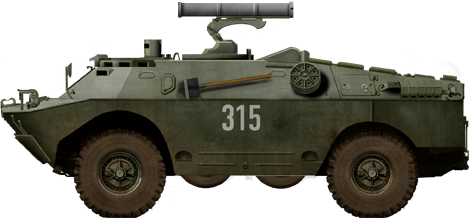
Soviet vehicle in the 1970s
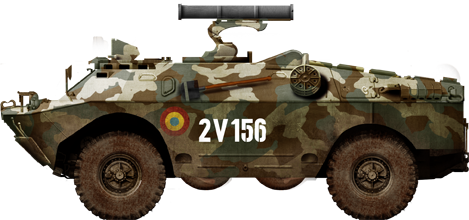
Romanian Vehicle
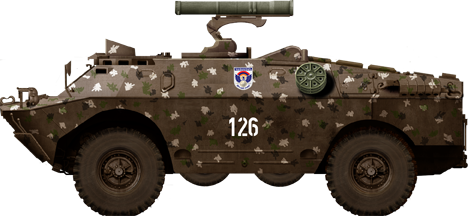
Armenian 9P148
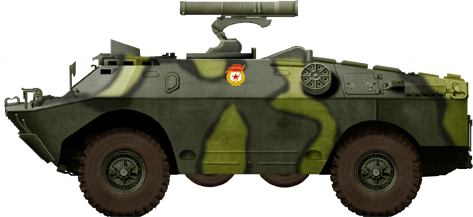
Russian 9P148 at Russexpo
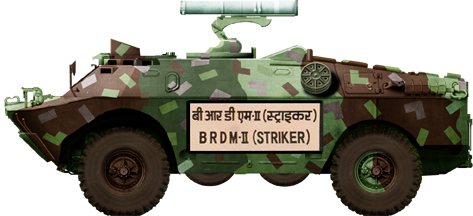
9P148 in India
Gallery
Tiraspol military parade 2015 Bulgaria
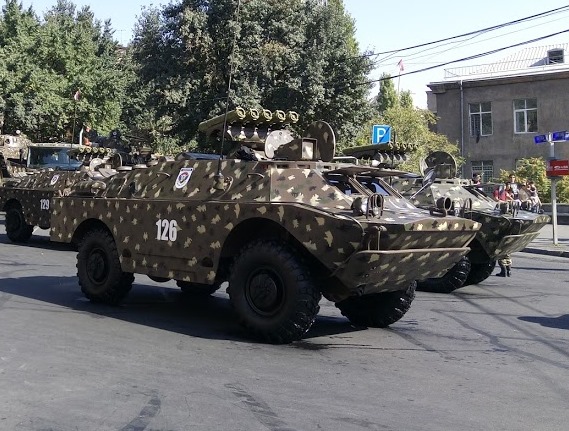
Armenian 9P148 Konkurs Tank Destroyer
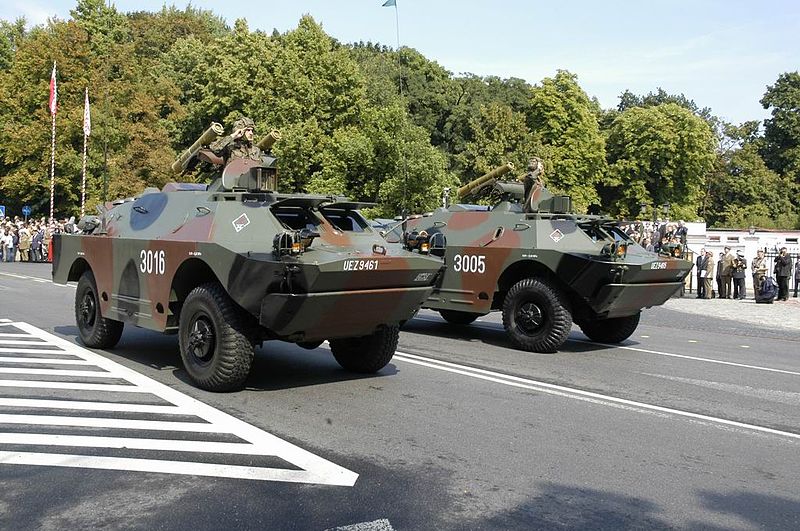
Polish 9p148 in 2008
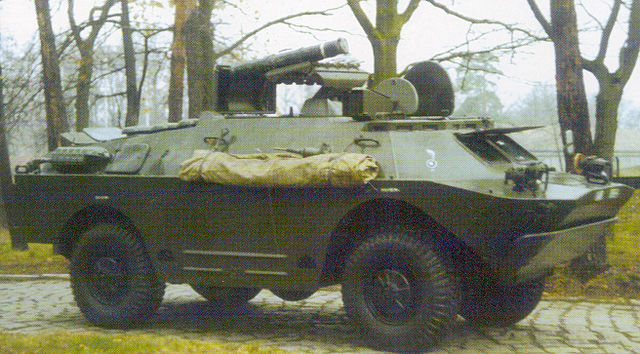
Polish 9P148 Konkurs in the coldwar
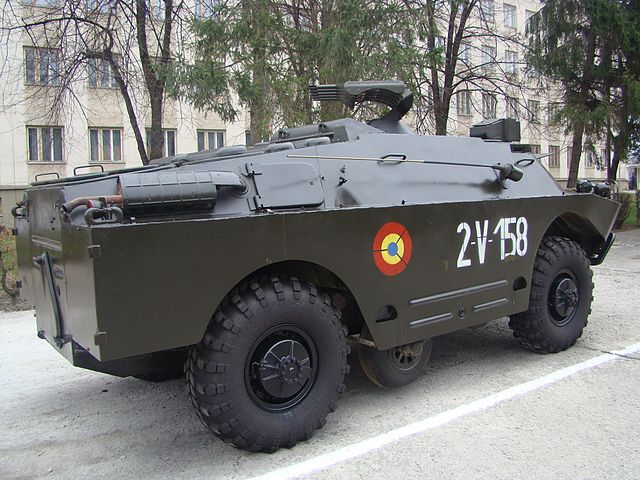
Romanian 9P148 Konkurs on display at Sibiu
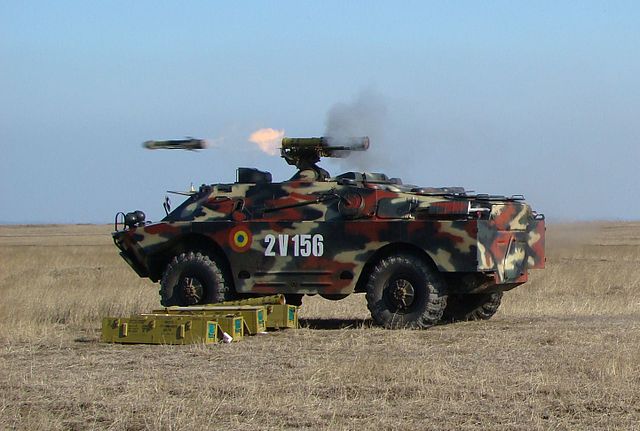
Romanian 9P148 Konkurs (cropped)
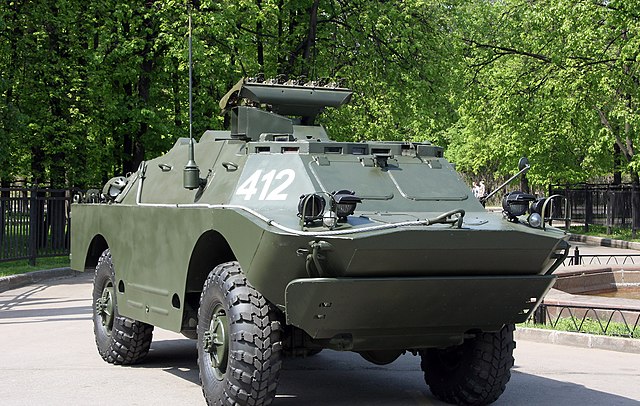
BRDM-2, 9 May 2010 at the military vehicles static displays in Luzhniki
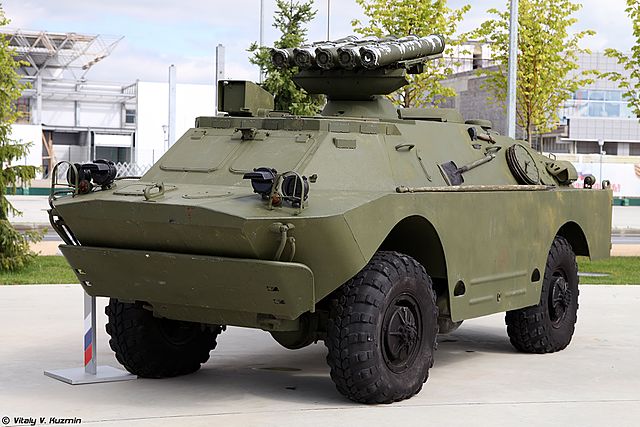
9P148 in Patriot Park, 2015
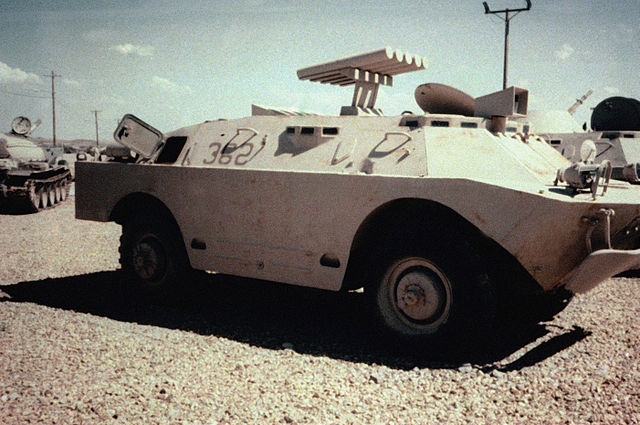
9P148 Konkurs tank destroyer on display
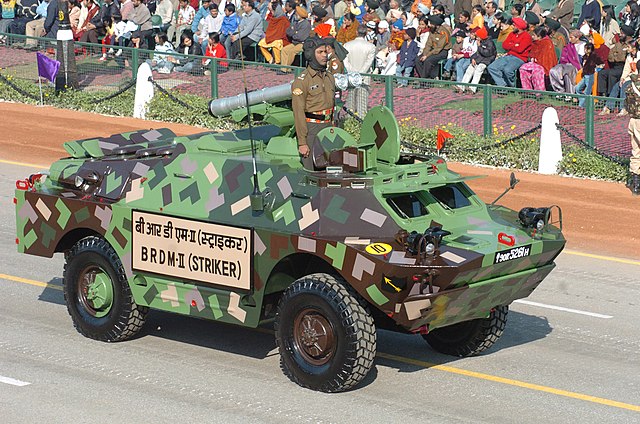
"BRDM-II Striker" at the Rajpath Republic Day Parade in New Delhi, Jan 2006

Cold War Tanks


































Cold war tanks posters

Cold War Main Battle Tanks

Cold War Soviet Army

